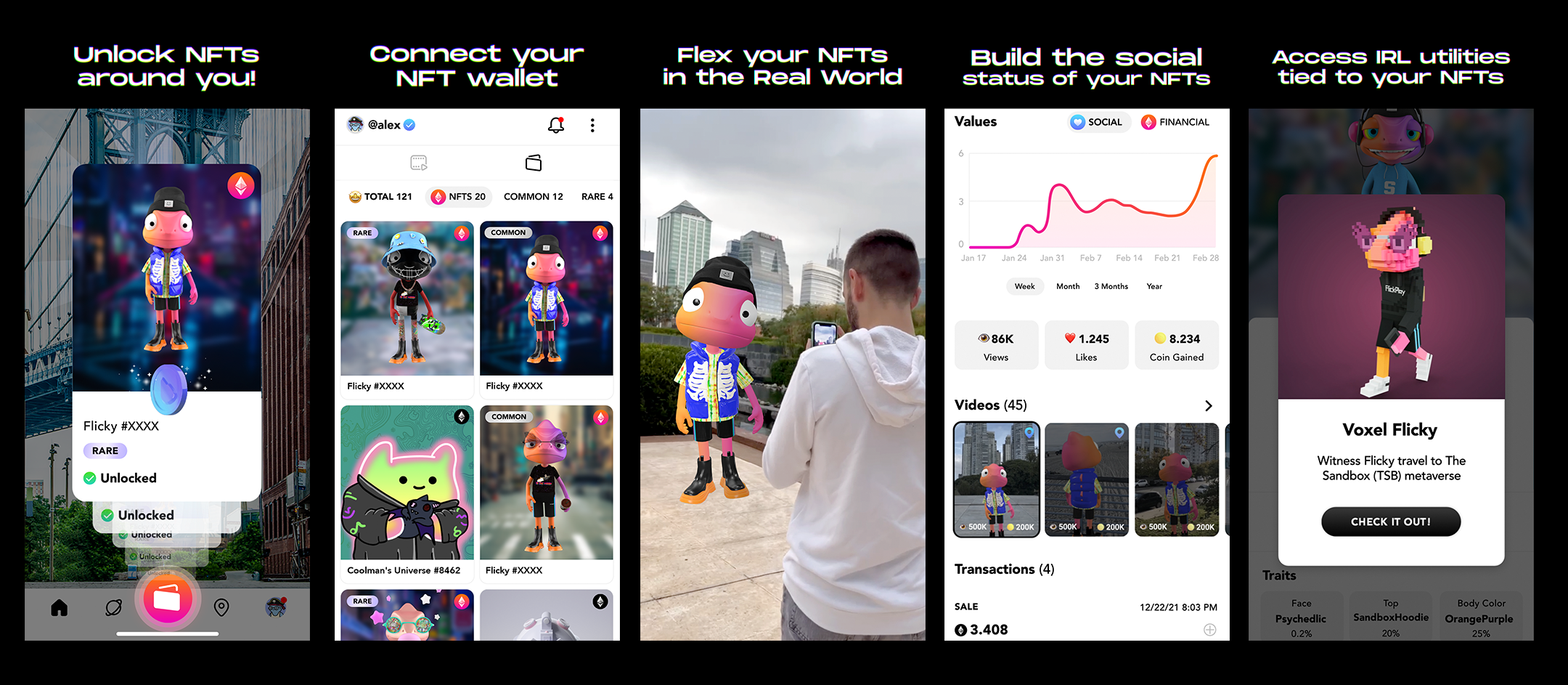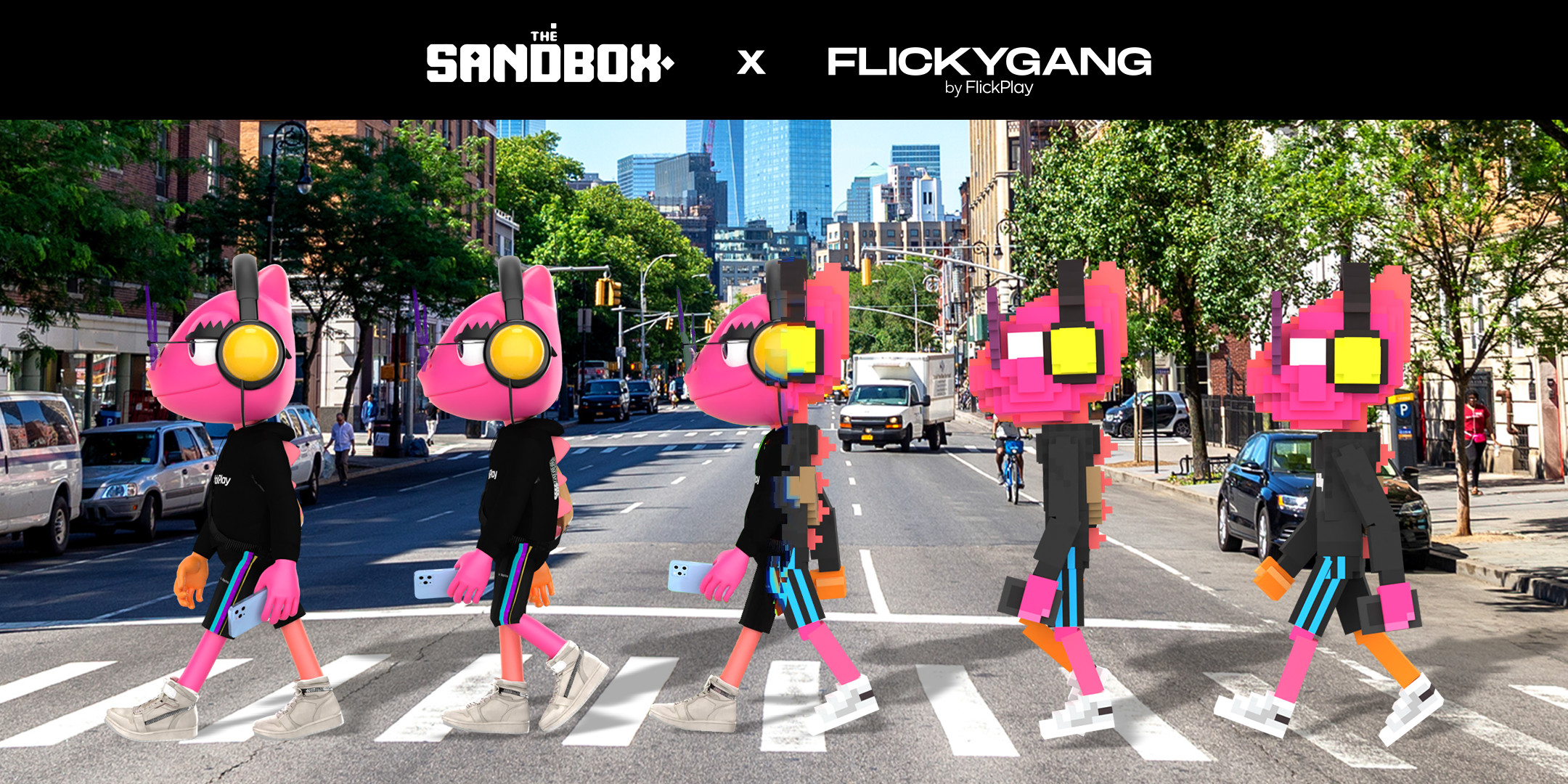For Pierina Merino, getting out of Venezuela was a no-brainer.
Aged 16, she had finished her high school studies in her home town of Ciudad Bolívar. But, with the country in a spiral of economic crisis and violence, she couldn’t celebrate. Merino’s family was understandably paranoid about safety concerns and so she didn’t even attend her own graduation ceremony.
“It was a situation in Venezuela where there was full-on chaos – life or death and there wasn’t a separation between the two,” she said.
“I wanted to go to architecture school at some point, but in a country that was going downhill, thinking about becoming an architect didn’t make any sense.”
This article is part of Road to Consensus, a series highlighting speakers and the big ideas they will discuss at Consensus 2022, CoinDesk’s festival of the year June 9-12 in Austin, Texas. Learn more.
She left to pursue her dream. Now, still only 30, Merino has realized not just her architectural ambition but a great deal more. She has found success with innovative jewelry design and, more recently, the creation of FlickPlay, a social metaverse platform which might just be the Next Big Thing.
“It feels like everything is coming full circle,” she said. “Did I know that things would be so aligned as a story line? Absolutely not.”
Story lines and storytelling frequently are important to Merino, particularly when discussing Flickplay, which she describes, for simplicity’s sake, as “a cross between TikTok and Pokemon Go.”
With FlickPlay’s augmented reality (AR) filters, users navigate through real cities using an interactive map on which they can find non-fungible tokens (NFTs) and digital collectibles (or “Flicks”) in physical locations, in the form of objects and wearables. Artworks, for example, might be found and collected from walls or other spaces. Users create videos on which they can brandish their NFTs and Flicks, building their social status through likes, comments and the earning of FlickCoins, the in-app currency. A “Social Graph” displays the social and ownership history of NFTs and Flicks on the platform.
“I can confidently say that we are the first social ecosystem where core ownership is the fundamental driver of status,” said Merino.
“Our thesis is that, in order to truly be the metaverse in the real world, you need to penetrate every layer of our cities and society and how they work together and coexist with each other.”
The user’s avatar is Flicky, a goggle-eyed chameleon who can be dressed, modified and colored according to taste. He even has his own origin myth, which explains that he was sent to this planet from elsewhere in the universe to observe humans: “During a technology revolution on Earth, a group of innovators discovered Flicky camouflaging with one of the walls in their studio. They were experimenting with a new device that utilized AR, and in uncovering Flicky they came to know of Flickverse, a different dimension in our world.”
So far, around three dozen U.S. cities, including Atlanta, Los Angeles, Miami and New York, have signed agreements allowing the gamified app to overlay its metaverse world on their streets. With 23 employees, FlickPlay has so far raised $6.3 million, and over 90,000 people signed up for a raffle offering a chance to “mint a Flicky” via metaverse platform The Sandbox, with which it signed a partnership in April allowing players to use a blockchain asset on both platforms. Meanwhile, Katy Perry’s “mocktail” brand De Soi is also in on the action, offering its nonalcoholic drinks to consumers who collect NFTs while playing FlickPlay.
When Nicole Quinn of Lightspeed Venture Partners announced her company’s investment in FlickPlay last year, she described it as a “genre-defining social app.”
“What Snap’s lenses did for selfies, FlickPlay intends to do for the rest of the world,” she wrote.

(FlickPlay)
Merino comes from an immigrant family. Her father’s parents were Spanish and her maternal grandfather, who was Sicilian, had a particularly dramatic rags-to-riches story. He migrated to Venezuela in the 1950s as a teenager, and after working as a miner, he eventually became a successful entrepreneur in the hospitality industry. Merino is acutely aware of how his story has informed her own career.
“When I was old enough to learn about the things he had accomplished in Venezuela it was pretty incredible because he comes from nothing,” she said. “He managed to build a massive hotel in our home town and really build his reputation as an incredible operator who was respected professionally but also as a human. That was incredibly inspiring.”
Her own parents have continued to work in hospitality and tourism, and they were keen that their three children (Merino has a brother and sister) should travel from an early age.
“We always had in mind the idea that our children should be educated abroad in order to give them a bigger vision of the world, to be more tolerant,” said Merino’s father, Yuri. “And, if they returned to Venezuela, to do so with a slightly different perspective.”
Merino’s departure after high school was made more urgent by the economic turmoil and soaring crime rate that Venezuela was experiencing under the leadership of leftist firebrand Hugo Chávez. At around that time, her aunt was kidnapped – a common occurrence in the country in recent years – before eventually being released.
“We didn’t want our children to live like that, in a country where there was so much lack of safety, so many political problems and constant danger,” said Yuri Merino.

(FlickPlay)
Carlos Adame, CEO and co-founder of Piñata Farms, is a close friend of Merino. Her migrant background, he believes, has been key in motivating her professionally.
“One of the mindsets that I’ve found the strongest in entrepreneurs, when I invest in startups and also identify them, is those that have the mentality that they’ve burned all the boats, there’s no going back,” he said.
“You’re thinking very strategically and in the moment on a daily basis. It’s not like: ‘If this works out, cool, this is fun.’ No, it’s like: ‘I have to make this win.’ And she has that, so I think that’s a huge, huge plus for her.”
Merino traveled first to Montreal, where she continued her education with the aim of becoming an architect. After moving to Miami to do a foundation course, she secured a place at the prestigious Southern California Institute of Architecture (SCI-Arc). When she was about to graduate, an acquaintance suggested she apply for a place at the studio of Frank Gehry, a legendary figure in the industry. Days later, aged 20, she was working in his Los Angeles headquarters.
“I got my dream job,” she said. “I got the job that people go to grad school and work for five years to aspire to.”
Gehry was perhaps best known as the creator of the dreamlike titanium-coated Guggenheim Museum in Bilbao, Spain. And fittingly, for someone who would end up so squarely in the tech world, Merino was part of the team commissioned with designing Facebook’s new offices, in Menlo Park, California.
“At the end of the day you go to work for Frank Gehry because you want to build what’s impossible to build, you want the challenge of creating things that are not tangibly possible,” she said.
Looking back on her stint working for Gehry, she sees the values and disciplines learned in his studio as ultimately being a crucial ingredient in her current approach to the world of social media, AR and gaming.
“In the technology space you have a community of developers and creators trying to push the boundaries of digital worlds or technology,” she explained. “But [unlike architects] they don’t really understand how humans interact in the real world, what creates emotion, how a space that is one foot higher or one foot lower can completely change your perception or emotions or the actions that you will take in that space.”
And yet, 2 1/2 years after landing her dream job, Merino moved on. Her entrepreneurial antennae were up, starting to sense opportunities that were alien to the rarefied world of building design. It began as she watched architectural project models that had cost thousands of dollars and enormous effort to create being thrown out once they had served their purpose.
“I was like ‘Oh my God, these are pieces of art that could be sold!,’” she recalled. “And after the presentation it goes to the dumpster. And you’re like ‘What? This is crazy!’ So I feel like I genuinely had this entrepreneurial drive.”
She added, by way of explanation for her departure from the firm: “Architects are like a cult, there is a very specific way of living and being when you are a part of that ecosystem.”
On leaving Gehry’s studio, Merino started designing 3D-printed jewelry under the name Piemer (as in Pie-rina Mer-ino). It started out as a small-scale venture. But a chance encounter with a national buyer from the Nordstrom department store in an elevator during a sales event suddenly changed everything.
“She gave me her card,” recalled Merino. “And a month later we were doing a national product placement in over 30 stores.”
By her own admission, she knew nothing about manufacturing for a national chain and so had to learn on the hoof – a skill that would stand her in good stead when she made her next move.
“I’d say the inception for FlickPlay really happened the moment that I started traveling to all these different stores and realizing that … I wasn’t talking with my customer but with their moms and grandmothers who were going there because, I don’t know, they were walking around on a Monday at 10 a.m. in the mall and they were saying to me ‘Can you send these to my granddaughter’s dorm?’”
Seeing how young people had abandoned the malls got Merino thinking about broader human behavior and – in a nod to her architectural background – changes in where in cities people choose to spend their time.
Adame has advised her since those early days in the tech world, when FlickPlay was just an idea.
“She stepped into this crazy world of startups and tech, and nobody knew her in LA,” he said. “She didn’t have a reputation and she just grinded. I remember in those early days she had all these odds stacked against her, and she was like: ‘I’m going to be going out to every single event, anything where I can just meet people, I’ve just got to meet people.’”
He added: “Her aim was: ‘I just need to start acquiring information, figuring out how this space works and what better way than to just throw myself in the fire?’”
Thomas Vu, an executive producer for Netflix series “Arcane,” was an early investor. He met Merino during a sponsored skiing trip to Mammoth Mountain for promising entrepreneurs, but at first he wasn’t convinced about FlickPlay.
“Initially, when I met her, I was scratching my head because she had no co-founders, no team. And I’m like: ‘How is she going to build this?’ What she’s building is not easy and … she had nothing. Initially I was like: ‘I don’t know if I can invest in this.’”
But he discovered that Merino learned fast.
“And then, out of nowhere she just starts hiring and she convinces the right kinds of people,” Vu recalled. “And four months afterwards it was woah! She’d manifested a number of things that checked the boxes for me.”
Merino often refers to psychology when explaining FlickPlay. She says the app’s success rests on the fundamental sources of status for humans in the real world: community, popularity and ownership. Facebook connected us, she points out, and Instagram allowed us to increase our popularity. But the human hunger for ownership, according to her theory, is yet to be fully sated in the digital world.
When Merino started “obsessing” in late 2017 and 2018 about social media and digital platforms, she felt a shift was already taking place with immersive games like Pokemon Go and Fortnite, and the interactive experiences offered by Museum of Ice Cream, all of which offered what she calls “a way to architect your reality.”

(FlickPlay)
FlickPlay, she said, was a natural next step, even though it took a while for the real world to catch on.
“Now it makes sense because of the NFT space and blockchain and awareness of what the metaverse is,” she said. “But two years ago, when I started FlickPlay, the idea of creating a platform around identity, based on things that you own digitally … not many people understood the why.”
In FlickPlay, she explains, you don’t start with zero status, you have a reputation that is created by the things that you own within the ecosystem: “Ownership gets introduced as more than a profile picture, it gets introduced as a fundamental driver of how you shape your identity.”
To illustrate her point, she used what might be seen as an autobiographical comparison.
“If I walk into a restaurant in a city, and no one knows me, and I’m dressing the part, and I’m driving the right car,” she said, “I create my entrance into the space in a way that I already resemble status – no one needs to know how many followers or how big my community is.”
The recent partnership with The Sandbox was confirmation that FlickPlay is on the cutting edge, with the two firms pioneering the much longed for concept of interoperability – that is, allowing users to move between different platforms while using the same NFTs. Holders of The Sandbox NFTs will be able to use them on FlickPlay next quarter.
The feeling among those who are close to Merino is that the sky’s the limit for her – one of her investors calls her (only half-jokingly) “a rockstar.”
“For someone to come here and build a startup, to convince people to build a whole verification around it, in an industry that was not even one she was in, this is the American dream, she is living that dream,” said Vu. “She’s living what most people really strive for.”
“She’s connecting the dots in terms of how can we can give this new technology … a different form of utility that others are not thinking about,” said Adame. “I think FlickPlay and Pierina are going to be at the top of a few different sectors.”
In fact, when you think about it, a chameleon is probably the most suitable animal that could represent FlickPlay, given the constant shape-shifting of its architect/jewelry manufacturer/metaverse-bending founder.
But what about more mundane concerns? Should parents be worried, for example, that Flicky the chameleon will get their kids hooked onto an app that is, after all, driven by ownership and status?
“Metaverse could be a very beautiful and impactful way for us to evolve the way we experience the real world, or it could be the destruction of humanity,” Merino said, admitting that the idea of kids putting on AR goggles and getting totally removed from the physical world for hours on end is disturbing.
But, she said: “If you give a kid an iPad and a toy, and research showed this, kids will go for the iPad. There is no way back, that’s the world we live in.
“How we build awareness about how a metaverse in the real world won’t change your reality but will shift the story line of your reality, I see that as a more sustainable way to educate kids on the value of the world we live in.”
Save a Seat Now
 BTC$30,060.20
BTC$30,060.20
1.68%
 ETH$2,056.50
ETH$2,056.50
2.33%
 XRP$0.427104
XRP$0.427104
2.84%
 SOL$54.92
SOL$54.92
4.13%
 CRO$0.195663
CRO$0.195663
4.48%
View All Prices
Layer 2

Sign up for The Node, our daily newsletter bringing you the biggest crypto news and ideas.







